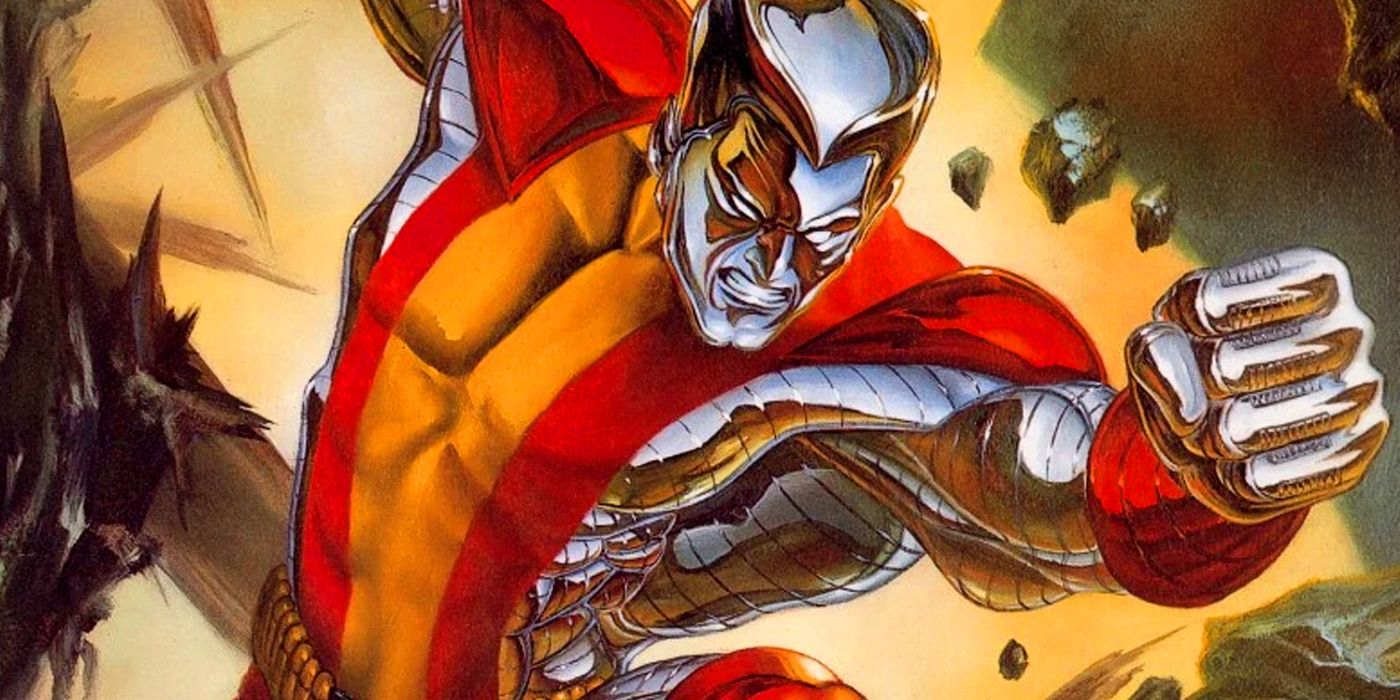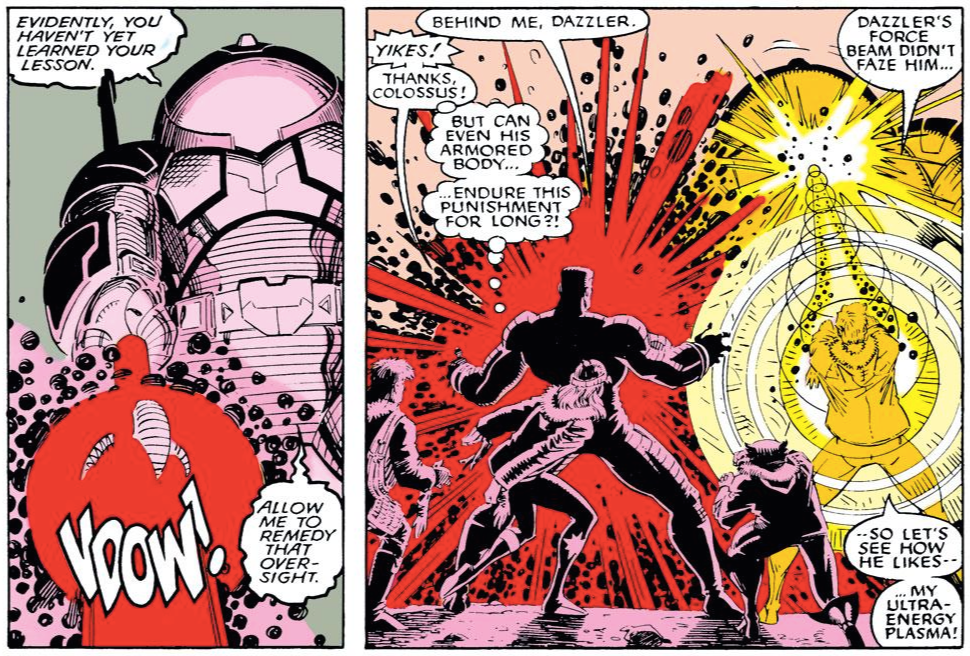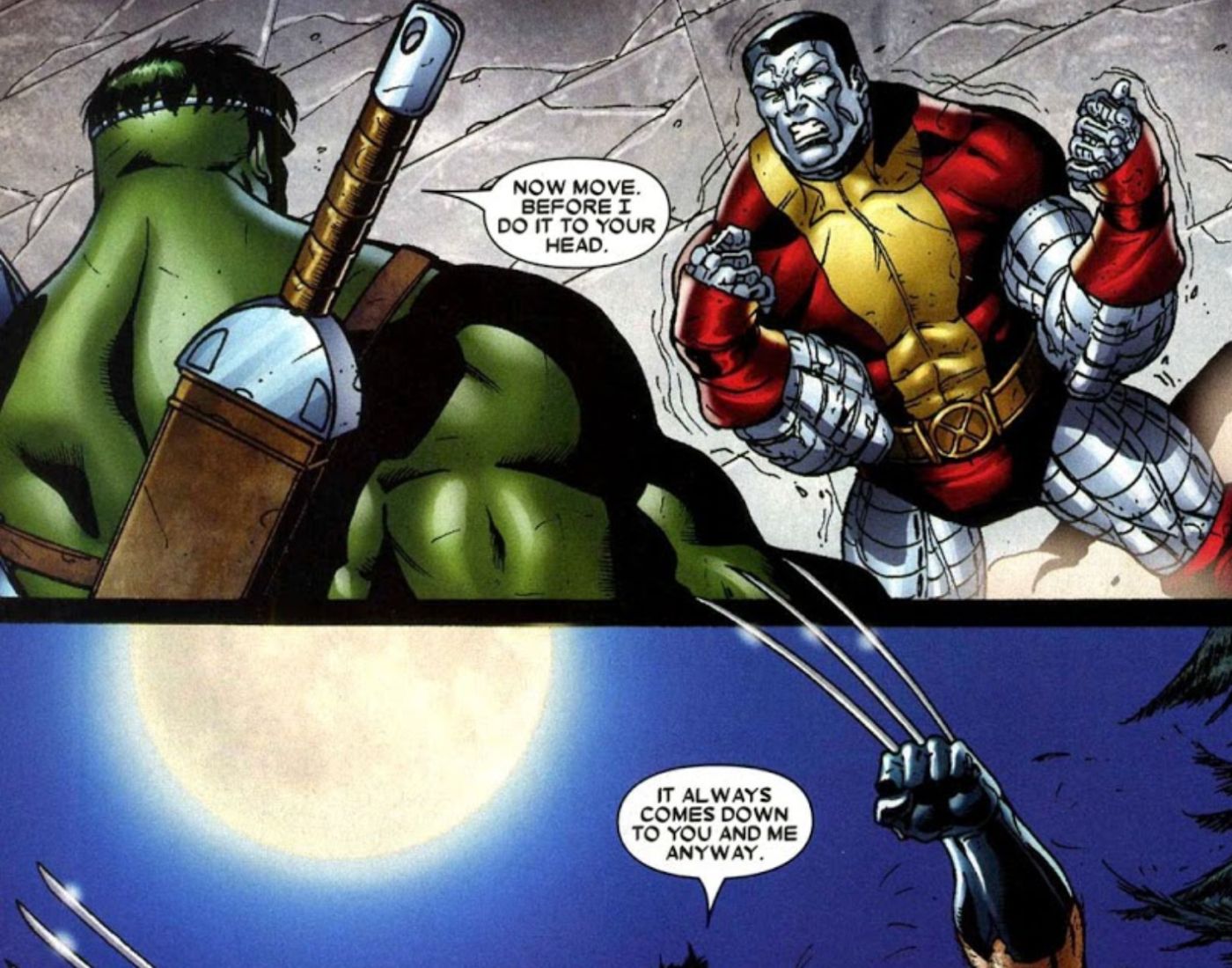When considering the powerhouses of the Marvel Universe, characters like the Hulk, the Thing and Thor come to mind instantly. But there other heroes that possess immense amounts of strength and the X-Men's resident powerhouse Colossus is one of them. What really sets Colossus apart from other super-strength wielding heroes is his metal skin, which gives him a look unlike any other. But how strong is it exactly and how does it compare in regards to the durability of other Marvel metals?
Piotr Rasputin, aka Colossus, has been described as having an organic steel body upon activating his mutant transformation. While in this metal-coated form Colossus gains an incredibly high amount of strength and damage resistance. To specify exactly what he transforms into, Colossus's body becomes imbued with the real-world metal osmium, which is the densest stable element, approximately twice as much as lead. Its essentially as tough as diamond, and its melting point is approximately 5491 degrees Fahrenheit. Colossus's entire body has these properties. Combine all of this with his superhuman strength and it becomes apparent very quickly just how powerful he really is.
The problem with the Marvel Universe, however, is that there is always a greater power. Compared to the average street-level hero like Daredevil or Moon Knight, Colossus lives up to his name. But compared to incredibly powerful beings such as the Hulk, the proverbial chinks in his armor start to show. In 2007's World War Hulk: X-Men by Chris Gage, Andrea Divito, and Laura Villari, Colossus goes up against the Hulk and suffers a terrible injury. While locked together hand-in-hand the Hulk painfully bends the mutant's arms back. And in 2010's X-Men Second Coming #2 by Zeb Wells, Ibraim Roberson, and Matt Milla Colossus suffers nearly the same injury when a swarm of Nimrod robots break his arm at the elbow. Colossus's metal body is tough, but it's not completely invulnerable to damage.
While osmium may be impressive in the real world, there are many amazing metals found only in the Marvel Universe, each with its own levels of strength and durability. Some metals are found in space while others are magically enhanced such as the Uru of Thor's hammer, and Vibranium (the deposits found on Earth are of extraterrestrial origins); there are metals that are manufactured on Earth such as adamantium and its variations (Wolverine's skeleton and Ultron's shell are made from this), Carbonadium (an Adamantium knock-off, that comprises the tentacles of Omega Red), and amalgamations of alloys and enhancements like Iron Man's many suits of armors.
Compared to all of those metals, Colossus ranks pretty low. Wolverine's adamantium claws have damaged both Thor and Thanos so Colossus would certainly take damage from them; Black Panther's claws, made from vibranium, would be effective in cutting Colossus's skin; and Captain America's shield, also made from vibranium, would be able to cut Colossus if thrown with enough force. The major difference between Colossus's metal skin and all of the other metals is that Colossus possesses the ability to heal himself while the others are far more difficult to repair.
Regardless, Colossus is still a formidable opponent and one of the most powerful members of the X-Men. But his osmium skin simply does not put him on the same level as those that wield vibranium, adamantium, or Uru. The fact that Colossus can last as long as he does in direct one-on-one combat against the likes of the Hulk and Gladiator is proof enough of his tremendous power. Despite lacking the same awesome invulnerability as Ultron, Colossus compensates for his lower power ranking with his unwavering loyalty, courage, and sense of justice. Colossus might not be the strongest hero, but he's definitely one of the bravest.



